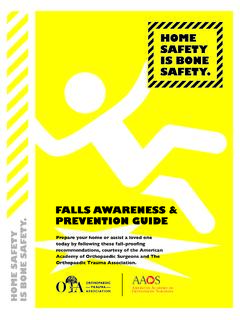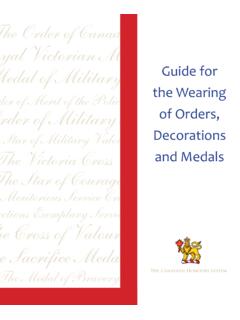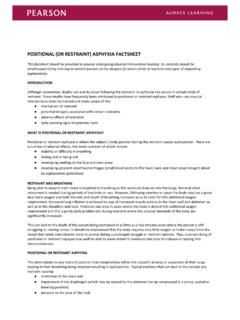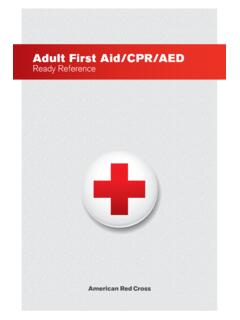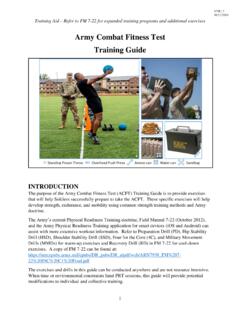Transcription of Our knowledge of orthopaedics. Your best health. Prepared ...
1 Introduction 1 AAOS does not endorse any treatments, procedures, products, or physicians referenced herein. This information is provided as an educational service and is not intended to serve as medical advice. Anyone seeking specific orthopaedic advice or assistance should consult his or her orthopaedic for: Prepared by:Our knowledge of orthopaedics. Your best Conditioning ProgramPurpose of Program _____After an injury or surgery, an exercise conditioning program will help you return to daily activities and enjoy a more active, healthy lifestyle. Following a well-structured conditioning program will also help you return to sports and other recreational activities. This is a general conditioning program that provides a wide range of exercises. To ensure that the program is safe and effective for you, it should be performed under your doctor s supervision. Talk to your doctor or physical therapist about which exercises will best help you meet your rehabilitation : Strengthening the muscles that support your spine will help keep your back and upper body stable.
2 Keeping these muscles strong can relieve back pain and prevent further : Stretching the muscles that you strengthen is important for restoring range of motion and preventing injury. Gently stretching after strengthening exercises can help reduce muscle soreness and keep your muscles long and Muscles: The muscle groups targeted in this conditioning program include: Cervical spine ( neck ) Trapezius ( neck and upper back) Latissimus dorsi (side and middle back) Back extensors and erector spinae (middle and lower back) Quadratus lumborum (lower back) Abdominals External oblique rotators (side and lower back) Internal oblique rotators (side and lower back) Piriformis (buttocks) Gluteus maximus (buttocks) Gluteus medias (buttocks) Hamstrings (back of thigh)Length of program: This spine conditioning program should be continued for 4 to 6 weeks, unless otherwise specified by your doctor or physical therapist. After your recovery, these exercises can be continued as a maintenance program for lifelong protection and health of your shoulders.
3 Performing the exercises two to three days a week will maintain strength and range of motion in your Started _____Warm up: Before doing the following exercises, warm up with 5 to 10 minutes of low impact activity, like walking or riding a stationary : After the warm-up, do the stretching exercises shown on Page 1 before moving on to the strengthening exercises. When you have completed the strengthening exercises, repeat the stretching exercises to end the not ignore pain: You should not feel pain during an exercise. Talk to your doctor or physical therapist if you have any pain while questions: If you are not sure how to do an exercise, or how often to do it, contact your doctor or physical therapist. American Academy of Orthopaedic Surgeons Exercises Page 1 AAOS does not endorse any treatments, procedures, products, or physicians referenced herein. This information is provided as an educational service and is not intended to serve as medical advice.
4 Anyone seeking specific orthopaedic advice or assistance should consult his or her orthopaedic knowledge of orthopaedics. Your best Head Rolls _____Main muscles worked: Cervical spine muscles, trapeziusYou should feel this stretch all around your neck and into your upper backEquipment needed: NoneStep-by-step directions Sit in a chair or stand with your weight evenly distributed on both feet. Gently bring your chin toward your chest . Roll your head to the right and turn so that your ear is over your shoulder (1). Hold for 5 seconds. Gently roll your head back toward your chest and to the left. Turn your head so that your ear is over your left shoulder (2). Hold for 5 seconds. Slowly roll your head back and in a clockwise circle three times (3). Reverse directions and slow roll your head in a counterclockwise circle three times (4).Spine Conditioning ProgramSTRETCHING EXERCISESR epetitions3 sets of 3 Days per weekDailyTipDo not shrug your shoulders up during this exercise.
5 2. Kneeling Back Extension _____Main muscles worked: Quadratus lumborum, erector spinaeYou should feel this stretch in your lower back and your abdominalsEquipment needed: NoneStep-by-step directions Begin on your hands and knees with your shoulders positioned over your hands. Rock forward onto your arms, round your shoulders and allow your low back to drop toward the floor. Hold for 5 seconds. Rock backward and sit your buttocks as close to your heels as possible. Extend your arms and hold for 5 per weekDailyTipLook down on the floor to keep your neck in alignment with your spine. American Academy of Orthopaedic Surgeons Exercises Page 2 AAOS does not endorse any treatments, procedures, products, or physicians referenced herein. This information is provided as an educational service and is not intended to serve as medical advice. Anyone seeking specific orthopaedic advice or assistance should consult his or her orthopaedic knowledge of orthopaedics.
6 Your best Modified Seat Side Straddle _____Main muscles worked: Hamstrings, extensor muscles, erector spinaeYou should feel this stretch in the back of your thighs and into your lower and middle backEquipment needed: None Step-by-step directions Sit on the floor with one leg extended to the side and the other leg bent. Keep your back straight and bend from your hips toward the foot of your straight leg. Reach your hands toward your toes and hold for 5 seconds. Slowly round your spine and bring your hands to your shin or ankle. Bring your head down as close to your knee as possible. Hold for 30 seconds and then relax for 30 seconds. Repeat on the other side. Repeat the sequence 10 Sitting Rotation Stretch _____Main muscles worked: Piriformis, external oblique rotators, internal oblique rotators You should feel this stretch in your buttocks, as well as at your sidesEquipment needed: None Step-by-step directions Sit on the floor with both legs straight out in front of you.
7 Cross one leg over the other. Slowly twist toward your bent leg, putting your hand behind you for support. Place your opposite arm on the side of your bent thigh and use it to help you twist further. Look over your shoulder and hold the stretch for 30 seconds. Slowly come back to center. Repeat on the other side. Repeat the entire sequence 4 times. Spine Conditioning ProgramSTRETCHING EXERCISESR epetitions2 sets of 4 Days per weekDailyTipSit up tall and keep your sit bones pressed into the floor throughout the each sideDays per weekDailyTipKeep your extended leg straight as you bring your head down. American Academy of Orthopaedic Surgeons Exercises Page 3 AAOS does not endorse any treatments, procedures, products, or physicians referenced herein. This information is provided as an educational service and is not intended to serve as medical advice. Anyone seeking specific orthopaedic advice or assistance should consult his or her orthopaedic knowledge of orthopaedics.
8 Your best Knee to chest _____Main muscles worked: Quadratus lumborum You should feel this stretch in your lower back, as well as in the front of your hip and inner thigh Equipment needed: NoneStep-by-step directions Lie on your back on the floor. Lift one leg and bring your knee toward your chest . Grasp your knee or shin and pull your leg in as far as it will go. Tighten your abdominals and press your spine to the floor. Hold for 5 seconds. Repeat on the other side, then pull both legs in together. Repeat the sequence 10 Conditioning ProgramSTRETCHING EXERCISESR epetitions3 sets of 10 Days per weekDailyTipKeep your spine aligned to the floor throughout the sequence. American Academy of Orthopaedic Surgeons Exercises Page 4 AAOS does not endorse any treatments, procedures, products, or physicians referenced herein. This information is provided as an educational service and is not intended to serve as medical advice.
9 Anyone seeking specific orthopaedic advice or assistance should consult his or her orthopaedic knowledge of orthopaedics. Your best Bird Dog _____Main muscles worked: Back extensors, erector spinae, gluteal muscles You should feel this exercise in your lower back and into your buttocksEquipment needed: NoneStep-by-step directions Begin on your hands and knees with your shoulders positioned over your hands and your hips directly over your knees. Tighten your abdominal muscles and raise one arm straight out to shoulder-height and level with your body. Hold until you feel balanced. Slowly lift and extend the opposite leg straight out from your hip. Tighten the muscles in your buttocks and thigh, and hold this position for 15 seconds. Slowly return to the start position and repeat with the opposite arm and Conditioning ProgramSTRENGTHENING EXERCISESR epetitions5 Days per weekDailyTipKeep your stomach muscles tight and your back flat to stay balanced.
10 7. Plank _____ Main muscles worked: Back extensors, erector spinae, quadratus lumborum, abdominals You should feel this exercise in your middle to lower back, abdominals, and gluteal musclesEquipment needed: NoneStep-by-step directions Lie on your stomach with your forearms on the floor and your elbows directly below your shoulders. Tighten your abdominal muscles and lift your hips off of the floor. Squeeze your gluteal muscles and lift your knees off of the floor. Keep your body straight and hold for 30 seconds. If you cannot hold this position, bring your knees back to the floor and hold with just your hips lifted. Slowly return to the start position and rest 30 seconds. per weekDailyTipDo not let your pelvis sag toward the floor. Keep your stomach muscles tight. American Academy of Orthopaedic Surgeons Exercises Page 5 AAOS does not endorse any treatments, procedures, products, or physicians referenced herein.

